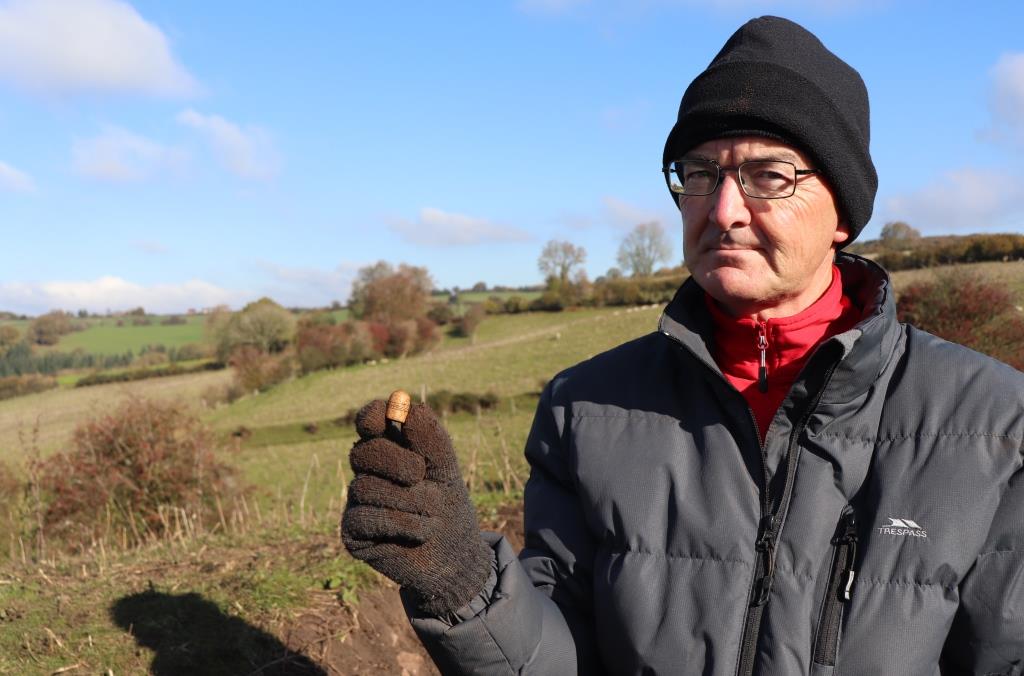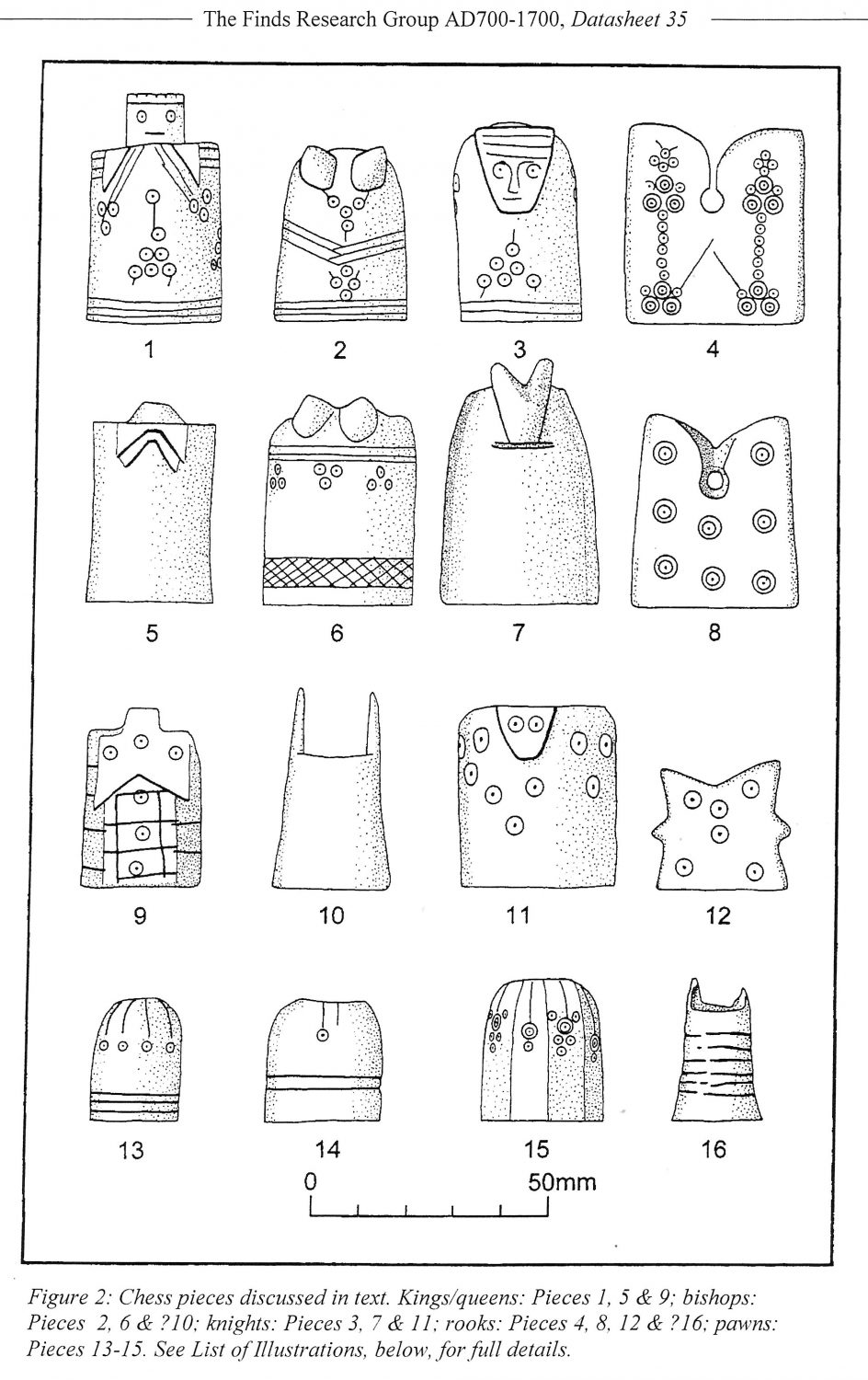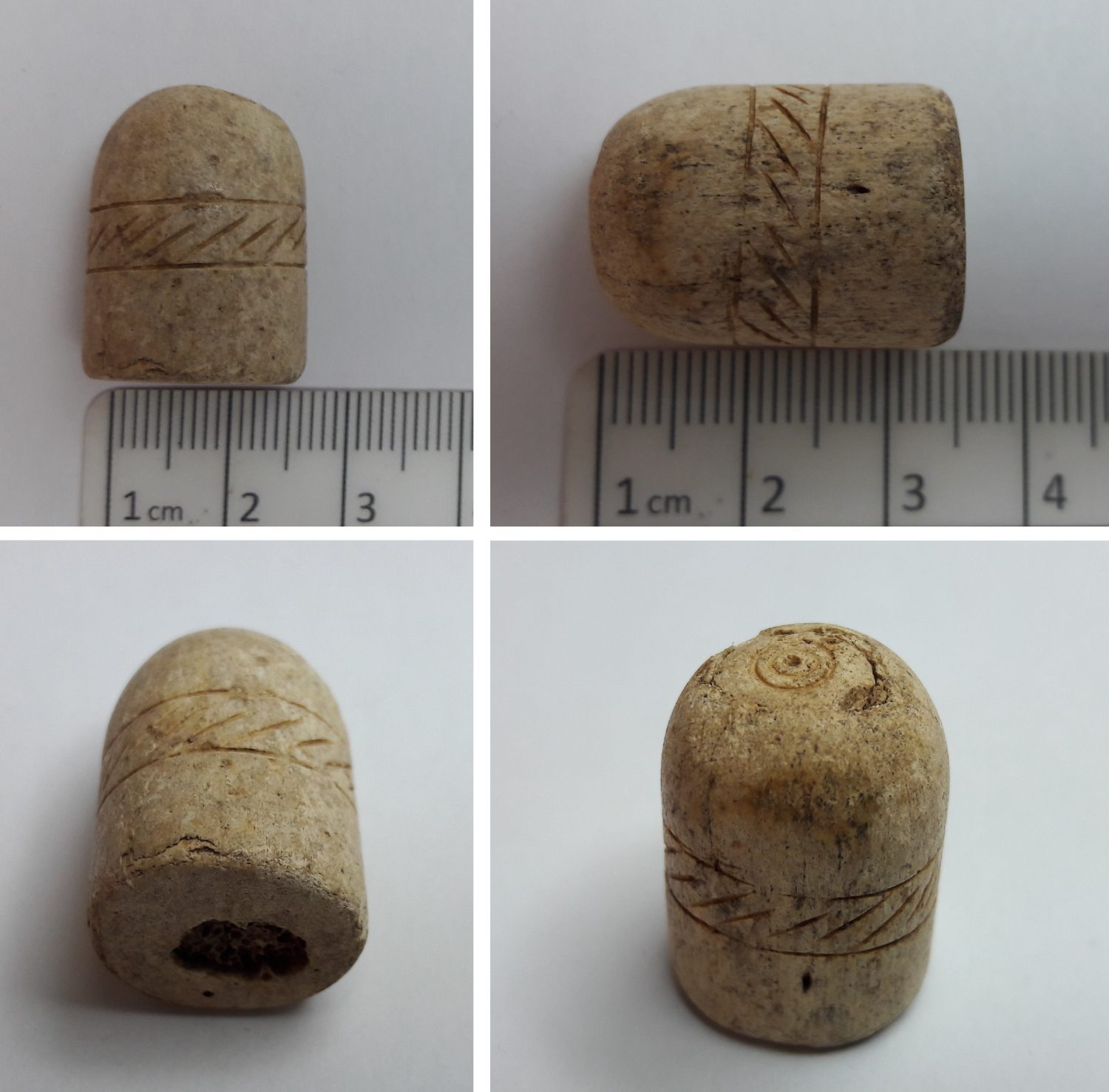Find of the Month – October 2018
- 6th November 2018
Keep your eyes open! You don’t need to be an archaeologist to discover fascinating finds. This month’s star artefact was found by a volunteer on our community excavation in the Forest of Dean.
During October, we ran a dig at Ruardean Castle – a nationally important and protected monument – as part of the Foresters’ Forest Landscape Partnership. Lots of locals volunteered, including Ian Evans. Whilst digging last Monday, Ian spotted a small, cylindrical object: a medieval gaming piece.

Finder, Ian Evans, holding the gaming piece found at Ruardean Castle
Closer inspection shows this gaming piece to be carved from antler, or possibly bone. Were Ruardean Castle’s medieval occupants playing chess? Quite possibly. The size and style of the piece suggests it’s probably a pawn from a chess set. A Scandinavian game called taefl also used similar shaped pieces and, although chess became more popular from the 12th century onwards, it continues even today under names such as Nine Men’s Morris. However, this decorated gaming piece more closely matches medieval chess pawns.
Chess originated in India by the 6th century then spread westwards through the Middle East, where pieces became more stylised to fit in with the Islamic preference for non-figurative depictions. In the 10th century, this stylised version of chess was introduced into Europe by the Islamic world. Within Northern Europe, the elite commissioned large, finely carved chess sets with anthropomorphic (human-like) figures made of ivory – the most famous example being the Lewis Chessmen. More common to the manors of medieval England were stylised chess sets carved from bone, antler, jet or wood.

Medieval chess pieces found in England – numbers 13 was also found in Gloucestershire (taken from Chapman 2005)
Ruardean Castle is an enigmatic site. It probably began life as an early medieval motte and bailey castle or ringwork (essentially a castle minus the motte, or mound). By the 14th century, Ruardean Castle had become a manor house with a licence to crenellate (fortify). It’s thought that the manor was abandoned by the 17th century, if not earlier.
Gaming pieces of this style are thought to date from the 11th to 14th centuries, although few examples are reliably dated. The incised bands around the piece and ring-and-dot motif on top are typical of chess pieces. It’s also common for them to have small plugs over the bone or antler’s honeycomb inner, as the Ruardean gaming piece has on top. Whilst other examples are known, such artefacts are still pretty rare – a survey in 2005* found just over 50 stylised chess pieces from England.

Gaming piece found at Ruardean Castle – the oval section on top is a separate plug over the antler’s honeycomb interior
Many interesting artefacts are found each year by members of the public. If you find anything suspiciously human-made and old, you can report your discovery to the Portable Antiquities Scheme – an organisation set up to record and identify archaeological finds discovered by the public. Please remember though that finds belong to the landowner, so don’t remove artefacts or metal detect without the owner’s permission.
*Chapman, A. 2005 Medieval Stylised Chess Pieces: The Finds Research Group Datasheet 32.
Post a Comment